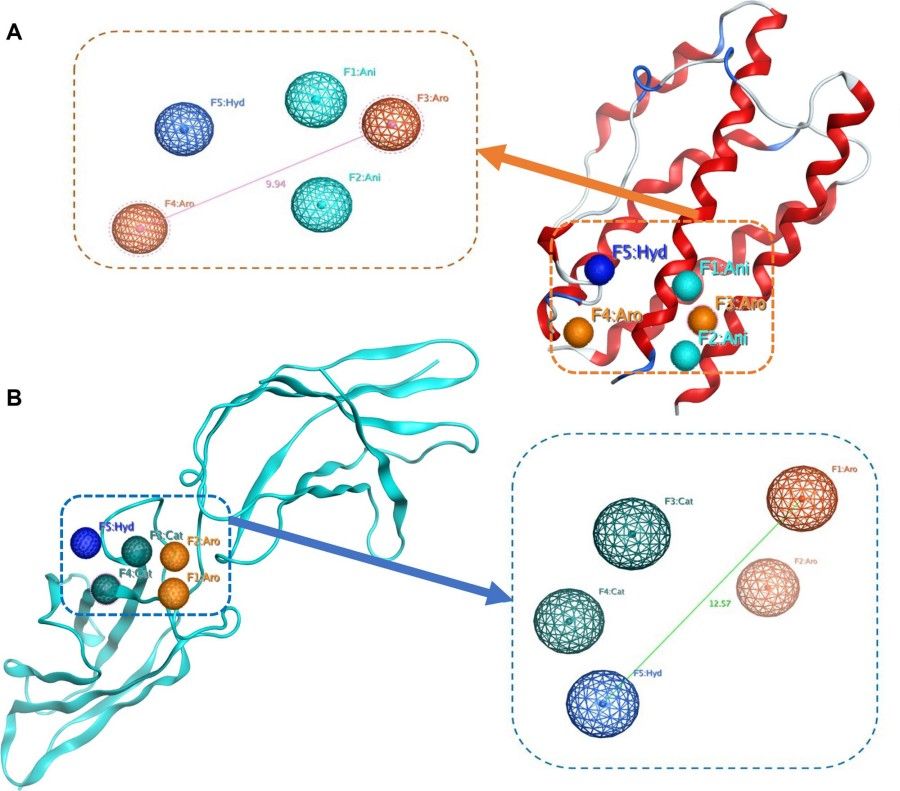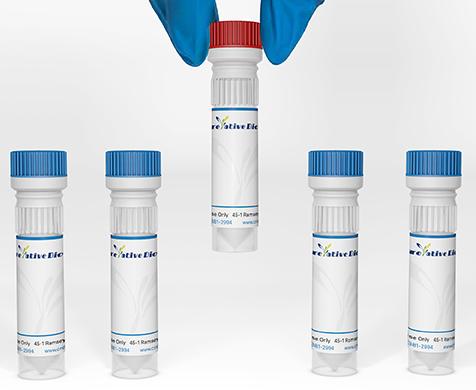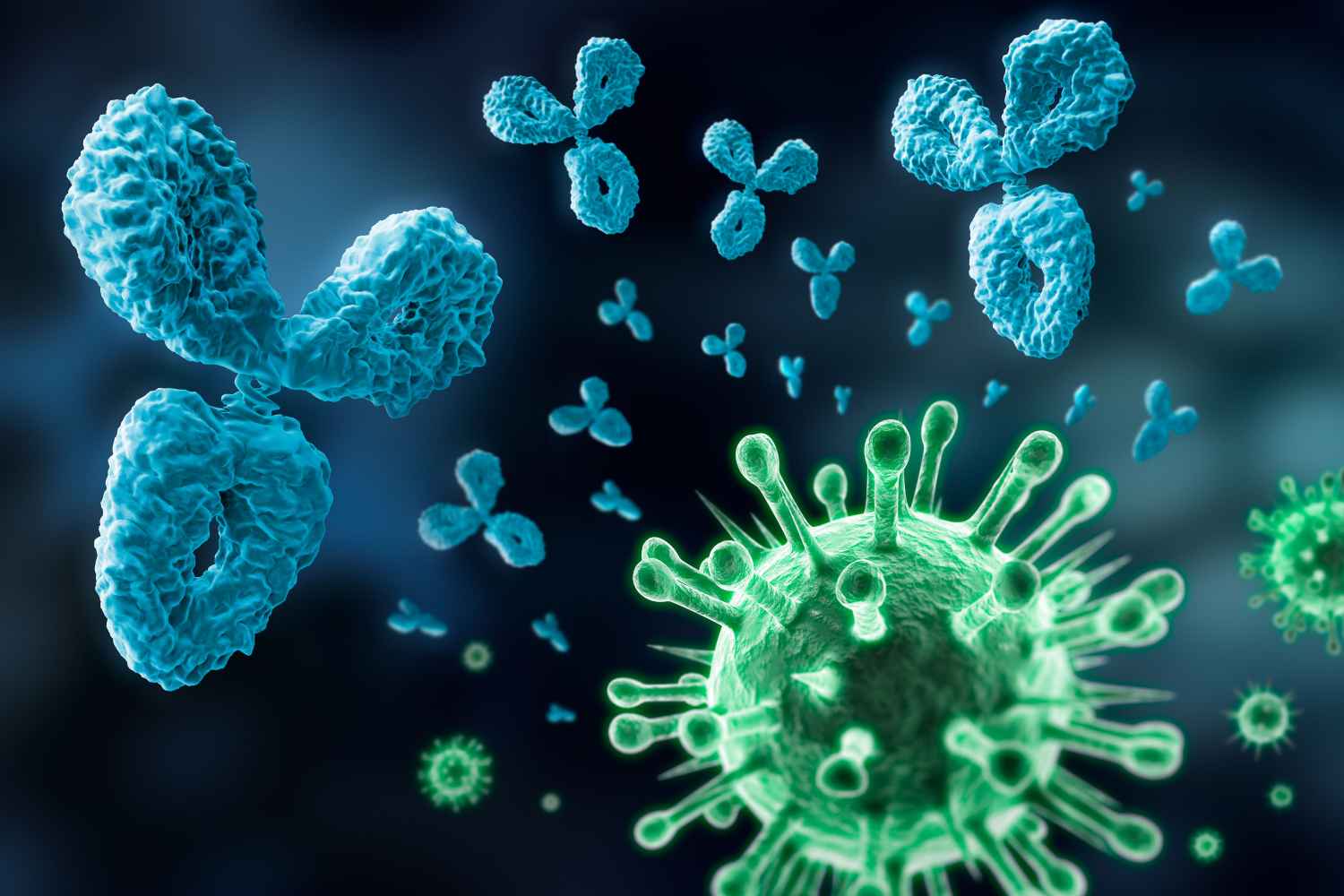IL6 Antibodies
Background
Interleukin-6 (IL-6) is a multifunctional glycoprotein cytokine secreted by various cells such as macrophages and T cells, and plays a core role in immune regulation, inflammatory response and hematopoietic processes. It bidirectionally regulates pro-inflammatory and anti-inflammatory signaling pathways through receptor complexes. It not only participates in the acute phase response, B-cell differentiation and metabolic balance, but also plays a key role in the body's defense mechanisms and tissue repair. Since its discovery as a B-cell stimulating factor in 1986, IL-6 has become a research hotspot due to its dual roles in physiological protection and pathological damage: Abnormal signaling pathways are closely related to rheumatoid arthritis, cytokine storms and various cancers. This discovery has directly promoted the development of targeted drugs. At present, the in-depth analysis of the mechanism of action of IL-6 not only enriches the immunological theory, but also provides an important strategy for the precise treatment of related diseases.
Structure of IL6
IL6 is a multifunctional cytokine with a molecular weight of approximately 20-26 kDa. It may vary slightly among different species due to differences in glycosylation modifications.
| Species | Human | Mouse | Rat | Pig |
| Molecular Weight (kDa) | 20-26 | 21-25 | 20-24 | 22-26 |
| Primary Structural Differences | Containing 184 amino acids, containing 2 N - glycosylation sites | Approximately 60% homology to human IL6 | Highly conserved with rat IL6 | Similar function to human IL6 but different degree of glycosylation |
IL6 is composed of 184 amino acids and has A typical four-helical bundle structure (A-D helix), belonging to the long-chain helical cytokine family. Its receptor system includes IL6R (α chain) and gp130 (signal transduction β chain), regulating immune responses, inflammation and hematopoietic function through the JAK-STAT signaling pathway. IL6 induces hepatocytes to produce CRP in the acute phase response and plays a key role in the differentiation of Th17 cells.
 Fig. 1 The pharmacophore models built based on PPI approach are mapped on IL-6 (Ph_1, A) and IL-6Rα (Ph_2, B) structures.1
Fig. 1 The pharmacophore models built based on PPI approach are mapped on IL-6 (Ph_1, A) and IL-6Rα (Ph_2, B) structures.1
Key structural properties of IL6:
- Four-helical bundle structure (A-D helix)
- Hydrophobic core to maintain structural stability
- Glycosylation modification sites (Asn73 and Asn172)
- Receptor binding key sites
- Disulfide bond (Cys45-Cys51)
Functions of IL6
IL6 is a multifunctional cytokine, mainly involved in immune regulation and inflammatory responses, and also plays an important role in metabolic balance, hematopoiesis and neuroendocrine regulation.
| Function | Description |
| Immune regulation | Promote the differentiation of B cells into plasma cells and enhance antibody production; Regulate the balance of Th17/Treg cells and affect the development of autoimmune diseases. |
| Inflammatory response | Induce hepatocytes to produce acute-phase proteins (such as CRP), activate neutrophils, and amplify inflammatory signals. |
| Hematopoietic support | Stimulate the proliferation of hematopoietic stem cells, promote the differentiation of megakaryocytes and platelet production. |
| Metabolic regulation | By influencing the functions of adipocytes and hepatocytes, it participates in insulin resistance and energy metabolism disorders (such as obesity and diabetes). |
| Dual effects of neuroprotection and injury | In the central nervous system, low concentrations of IL6 promote the survival of neurons, while high concentrations aggravate neuroinflammation and damage. |
| Tissue repair | Activate the STAT3 pathway to promote the proliferation of fibroblasts and the regeneration of damaged tissues. |
IL6 mediates anti-inflammatory and regenerative effects through the classical signaling pathway (membrane-bound IL6R), while the trans-signaling pathway (soluble IL6R) dominates the pro-inflammatory effect. Its functions are concentration-dependent (maintaining homeostasis at the physiological pg/mL level and driving inflammation at the pathological ng/mL level) and synergistic (forming a positive feedback loop with TNF-α, IL-1β, etc.). The effect shows significant context-dependent due to the differences in the tissue microenvironment and receptor expression.
Applications of IL6 and IL6 Antibody in Literature
1. Bloomfield, Marketa, et al. "Anti-IL6 autoantibodies in an infant with CRP-less septic shock." Frontiers in Immunology 10 (2019): 2629. https://doi.org/10.3389/fimmu.2019.02629
This article indicates that interleukin-6 (IL-6) is a pro-inflammatory core factor, inducing the production of C-reactive protein (CRP) and activating the innate immune response. Anti-il-6 antibodies can weaken the host's anti-infection ability, which is of great clinical significance for the application of IL-6-targeted biological agents such as tocilizumab.
2. Jiang, Yang, et al. "NFAT1-regulated IL6 signalling contributes to aggressive phenotypes of glioma." Cell Communication and Signaling 15 (2017): 1-11. https://doi.org/10.1186/s12964-017-0210-1
This article indicates that IL6 promotes the progression of glioma through the JAK/STAT pathway, and its high expression is significantly associated with poor prognosis in patients. IL6 not only activates the inflammatory response in the tumor microenvironment, but also maintains the characteristics of glioma stem cells. This study focuses on exploring the regulatory mechanism of the IL6/IL6R signaling axis in glioma, providing a new target for immunotherapy.
3. Kong, Eryan, et al. "STAT3 controls IL6-dependent regulation of serotonin transporter function and depression-like behavior." Scientific reports 5.1 (2015): 9009. https://doi.org/10.1038/srep09009
This article indicates that IL6 down-regulates the expression of serotonin transporter (SERT) through the STAT3 signaling pathway and reduces the uptake of 5-HT, thereby participating in the pathogenesis of depression. The SERT level in the hippocampus of IL6 knockout mice increased, and depression-like behaviors were alleviated, suggesting that targeting the IL6/STAT3 pathway may be a new direction for antidepressant treatment.
4. Wang, Min-Jun, et al. "The double-edged effects of IL-6 in liver regeneration, aging, inflammation, and diseases." Experimental Hematology & Oncology 13.1 (2024): 62. https://doi.org/10.1186/s40164-024-00527-1
This article indicates that IL-6 exerts a dual effect through three signaling patterns: cis, trans and cluster: it not only promotes hepatocyte regeneration (anti-inflammatory), but also accelerates liver fibrosis/canceration (pro-inflammatory). Therapies targeting the IL-6/IL-6R/gp130 signaling axis have been used in clinical practice, providing a new strategy for the treatment of liver diseases.
5. Van Zaanen, H. C., et al. "Endogenous interleukin 6 production in multiple myeloma patients treated with chimeric monoclonal anti-IL6 antibodies indicates the existence of a positive feed-back loop." The Journal of clinical investigation 98.6 (1996): 1441-1448. https://doi.org/10.1172/JCI118932
This article indicates that IL6 plays a key role in the pathogenesis of multiple myeloma (MM). The study used chimeric anti-IL6 monoclonal antibody (cMab) to treat chemotherapy-resistant MM patients. It was found that the half-life of this antibody reached 17.6 days, which could effectively inhibit the abnormally elevated endogenous IL6 production in patients (60μg/d before treatment and <3μg/d after treatment), but had no blocking effect on infection-induced IL6 production. Studies have confirmed that cMab can block the IL6 positive feedback cycle and has low immunogenicity.
Creative Biolabs: IL6 Antibodies for Research
Creative Biolabs specializes in the production of high-quality IL6 antibodies for research and industrial applications. Our portfolio includes monoclonal antibodies tailored for ELISA, WB, FC, IHC and other diagnostic methodologies.
- Custom IL6 Antibody Development: Tailor-made solutions to meet specific research requirements.
- Bulk Production: Large-scale antibody manufacturing for industry partners.
- Technical Support: Expert consultation for protocol optimization and troubleshooting.
- Aliquoting Services: Conveniently sized aliquots for long-term storage and consistent experimental outcomes.
For more details on our IL6 antibodies, custom preparations, or technical support, contact us at info@creative-biolabs.com.
Reference
- Tran, Que-Huong, et al. "Structure-based 3D-Pharmacophore modeling to discover novel interleukin 6 inhibitors: An in silico screening, molecular dynamics simulations and binding free energy calculations." PLoS One 17.4 (2022): e0266632. https://doi.org/10.1371/journal.pone.0266632
Anti-IL6 antibodies
 Loading...
Loading...
Hot products 
-
Mouse Anti-CECR2 Recombinant Antibody (CBWJC-2465) (CBMAB-C3533WJ)

-
Mouse Anti-BPGM Recombinant Antibody (CBYY-1806) (CBMAB-2155-YY)

-
Mouse Anti-ADIPOR2 Recombinant Antibody (V2-179983) (CBMAB-A1369-YC)

-
Mouse Anti-AKR1C3 Recombinant Antibody (V2-12560) (CBMAB-1050-CN)

-
Mouse Anti-ASH1L Monoclonal Antibody (ASH5H03) (CBMAB-1372-YC)

-
Mouse Anti-CTCF Recombinant Antibody (CBFYC-2371) (CBMAB-C2443-FY)

-
Mouse Anti-ABIN2 Recombinant Antibody (V2-179106) (CBMAB-A0349-YC)

-
Mouse Anti-EIF4G1 Recombinant Antibody (2A9) (CBMAB-A2544-LY)

-
Mouse Anti-APP Recombinant Antibody (5C2A1) (CBMAB-A3314-YC)

-
Mouse Anti-HTLV-1 gp46 Recombinant Antibody (CBMW-H1006) (CBMAB-V208-1154-FY)

-
Mouse Anti-CD2AP Recombinant Antibody (BR083) (CBMAB-BR083LY)

-
Mouse Anti-ARHGAP5 Recombinant Antibody (54/P190-B) (CBMAB-P0070-YC)

-
Mouse Anti-DLC1 Recombinant Antibody (D1009) (CBMAB-D1009-YC)

-
Mouse Anti-EPO Recombinant Antibody (CBFYR0196) (CBMAB-R0196-FY)

-
Mouse Anti-CFL1 (Phospho-Ser3) Recombinant Antibody (CBFYC-1770) (CBMAB-C1832-FY)

-
Mouse Anti-CARTPT Recombinant Antibody (113612) (CBMAB-C2450-LY)

-
Mouse Anti-CD83 Recombinant Antibody (HB15) (CBMAB-C1765-CQ)

-
Mouse Anti-C5B-9 Recombinant Antibody (CBFYA-0216) (CBMAB-X0304-FY)

-
Mouse Anti-BIRC7 Recombinant Antibody (88C570) (CBMAB-L0261-YJ)

-
Mouse Anti-DLL4 Recombinant Antibody (D1090) (CBMAB-D1090-YC)

- AActivation
- AGAgonist
- APApoptosis
- BBlocking
- BABioassay
- BIBioimaging
- CImmunohistochemistry-Frozen Sections
- CIChromatin Immunoprecipitation
- CTCytotoxicity
- CSCostimulation
- DDepletion
- DBDot Blot
- EELISA
- ECELISA(Cap)
- EDELISA(Det)
- ESELISpot
- EMElectron Microscopy
- FFlow Cytometry
- FNFunction Assay
- GSGel Supershift
- IInhibition
- IAEnzyme Immunoassay
- ICImmunocytochemistry
- IDImmunodiffusion
- IEImmunoelectrophoresis
- IFImmunofluorescence
- IGImmunochromatography
- IHImmunohistochemistry
- IMImmunomicroscopy
- IOImmunoassay
- IPImmunoprecipitation
- ISIntracellular Staining for Flow Cytometry
- LALuminex Assay
- LFLateral Flow Immunoassay
- MMicroarray
- MCMass Cytometry/CyTOF
- MDMeDIP
- MSElectrophoretic Mobility Shift Assay
- NNeutralization
- PImmunohistologyp-Paraffin Sections
- PAPeptide Array
- PEPeptide ELISA
- PLProximity Ligation Assay
- RRadioimmunoassay
- SStimulation
- SESandwich ELISA
- SHIn situ hybridization
- TCTissue Culture
- WBWestern Blot






